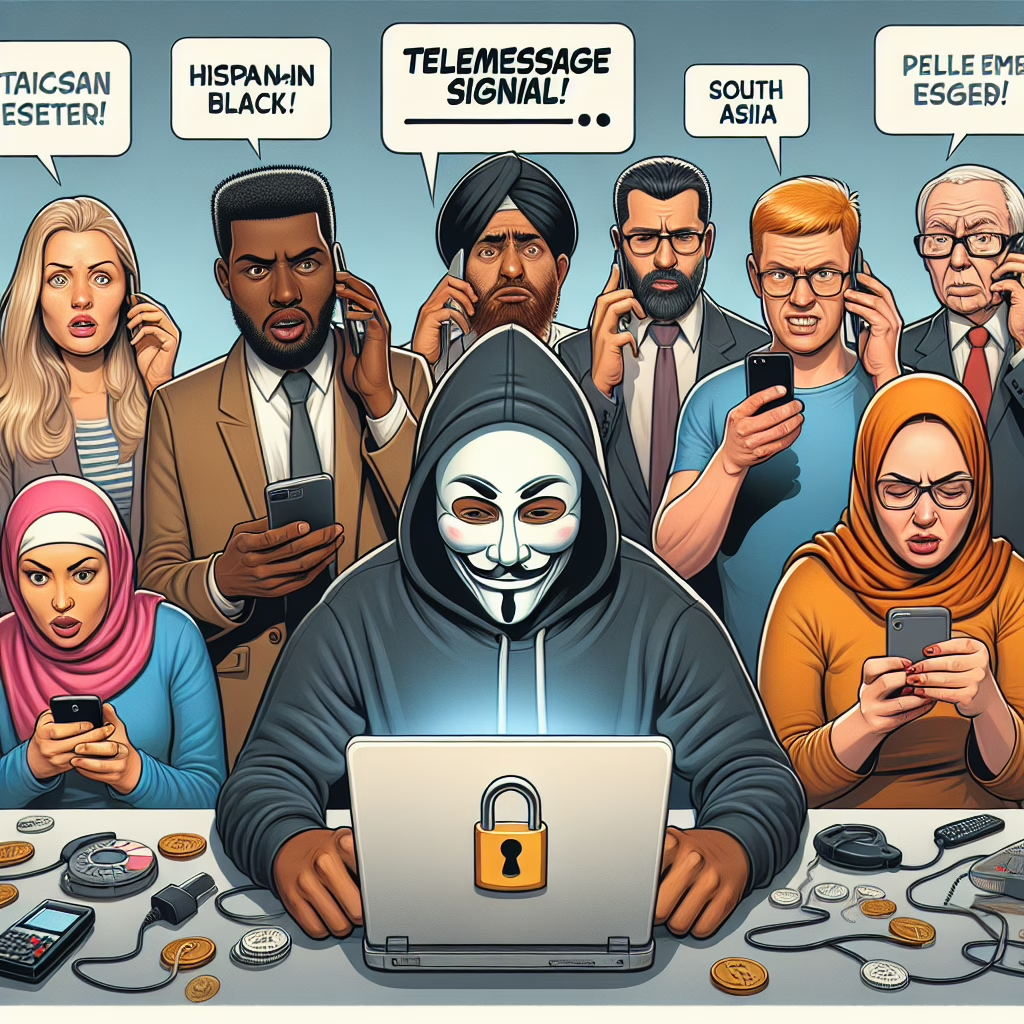In a plot twist that even the most seasoned political thrillers would envy, the TeleMessage app, which has been likened to Signal, recently found itself embroiled in a hacking scandal. This isn’t just any breach; it’s one that has sent ripples through the corridors of power and raised eyebrows among tech enthusiasts and security experts alike. If you thought your daily gossip was juicy, wait until you hear about this!
What is TeleMessage?
For those who might not have heard of it (and that’s perfectly understandable), TeleMessage is a messaging app designed to provide secure communication, much like its more famous counterpart, Signal. Originally embraced by the Trump administration for its supposed security features, this app promised to keep conversations private and encrypted. However, it seems even the best-laid plans can go awry.
The Breach: What Happened?
The recent hacking incident revealed that hackers could access sensitive information from this otherwise stalwart application. While we’re sure these hackers were not trying to send memes or cat videos, they did manage to expose some serious vulnerabilities. The breach reportedly compromised user data, including messages and contact information, causing a frenzy among users who probably thought their chats were as safe as a vault in Fort Knox.
Imagine waking up one day to find out that your seemingly secure conversations are more exposed than a celebrity on vacation! Users of TeleMessage were left questioning their choice of communication tools. After all, if a messaging app used by high-profile figures can be hacked, what hope do the rest of us have?
How Did It Happen?
You might wonder how such an app could fall victim to hackers. Well, it turns out that even the most sophisticated systems are susceptible to human error and technical glitches. Reports suggest that the breach stemmed from misconfigurations within the app’s cloud infrastructure. In simpler terms: someone forgot to lock the front door.
This incident serves as a reminder that no matter how secure a platform claims to be, vulnerabilities can lurk in the shadows. Just when you thought you were safe texting about your weekend plans or last night’s dinner!
The Implications for Users
So what does this mean for users? For starters, it raises some important questions about privacy and security in our digital age. If an app as high-profile as TeleMessage can be breached, what does that say about other messaging platforms? Should we all start sending smoke signals instead?
While panic might not be necessary just yet, it’s wise for users to reassess their reliance on apps for private conversations. It might be time to consider adopting additional layers of security—like good old-fashioned face-to-face chats or perhaps utilizing encrypted platforms with a proven track record.
- **Evaluate your security settings regularly.**
- **Consider using multi-factor authentication.**
- **Explore alternatives like Signal that prioritize security.**
A Silver Lining?
On the bright side, this breach could spark meaningful discussions about enhancing security measures across all messaging platforms. After all, if anything good can come from chaos, it’s usually innovation! Developers may now feel compelled to bolster their security protocols and make user privacy a top priority.
Moreover, this incident shines a light on the importance of transparency in tech companies regarding their security practices. If users know how secure (or insecure) their apps are, they can make informed decisions instead of blindly trusting the latest shiny tool on the market.
The Final Word
The hacking of TeleMessage, once regarded as a beacon of privacy akin to Signal, reminds us all of the fragility of digital security. While it’s easy to chuckle at the irony—an app meant for secure communication falling victim to hackers—it also underscores a crucial point: vigilance is key.
If you’re currently using any messaging platform (including your beloved TeleMessage), consider taking steps to enhance your personal security. Maybe double-check those settings or explore alternatives that prioritize encryption and user privacy. And remember—if something feels too good to be true, it probably is!
Your thoughts on this situation are welcome! Feel free to share your insights in the comments below.
A big thank you to TechRadar for shedding light on this story! You can read their original article here.
For further insights, explore other topics such as security risks in open source software or learn about the latest in tech innovations. Staying informed is your best line of defense!

